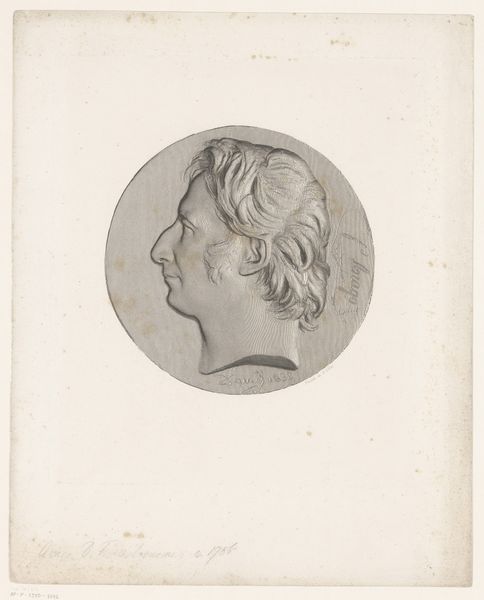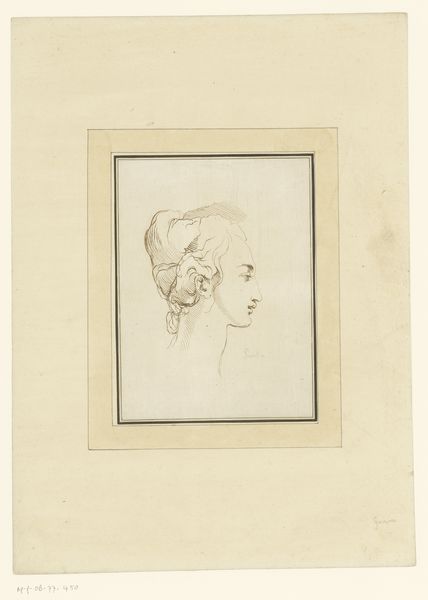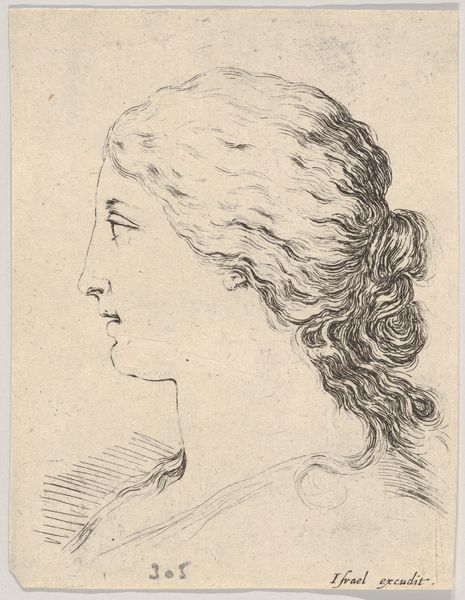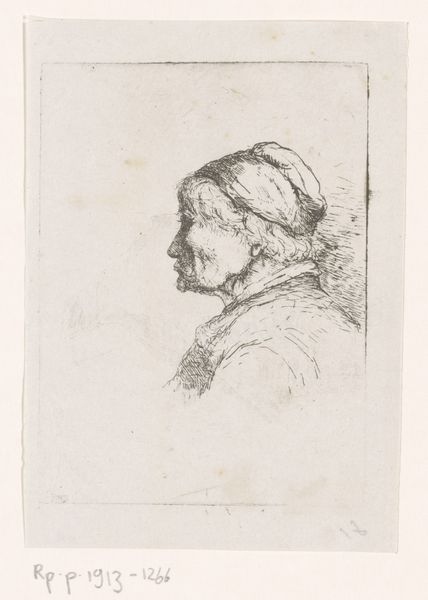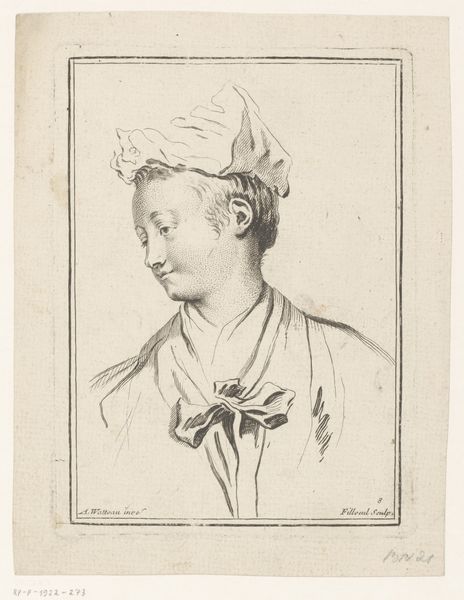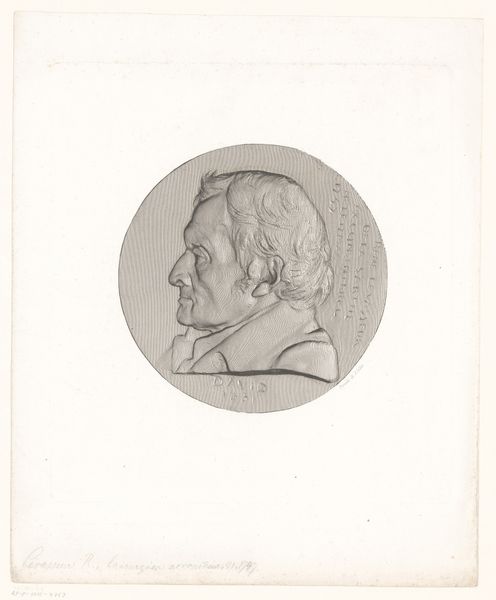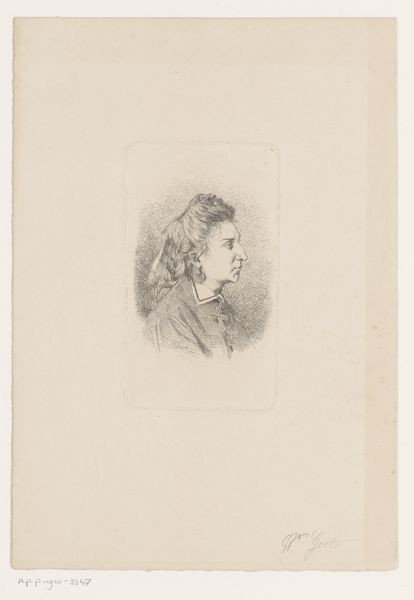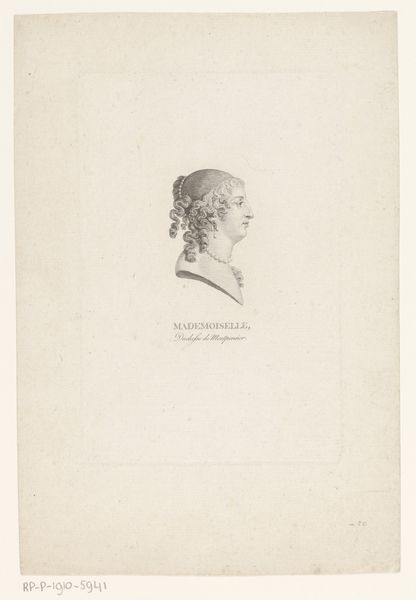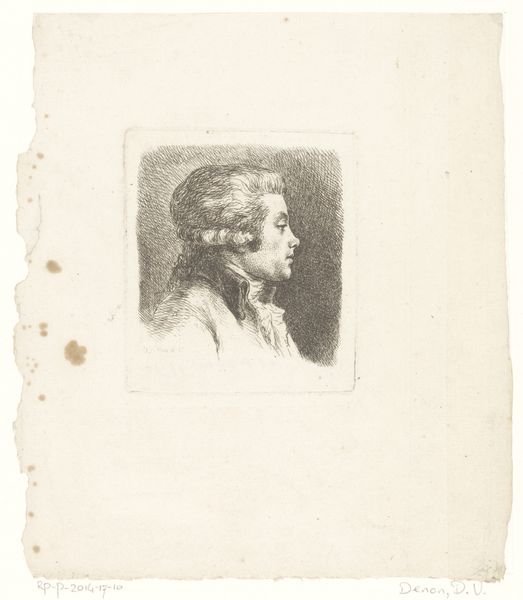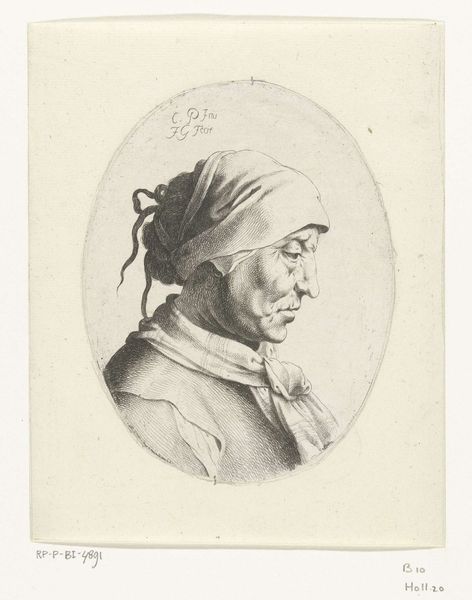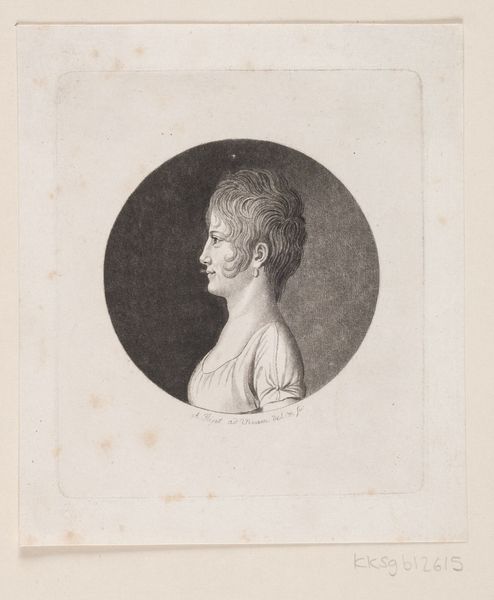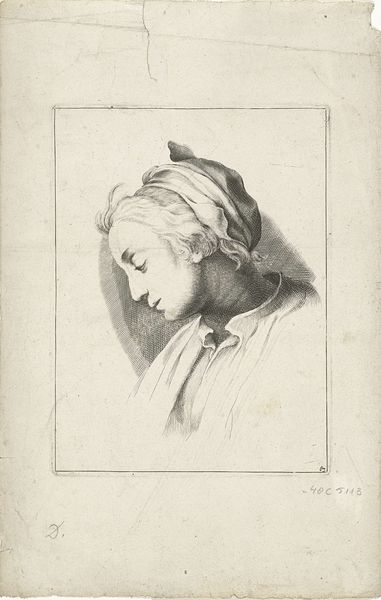
drawing, print, engraving
#
portrait
#
drawing
#
baroque
# print
#
engraving
Dimensions: height 169 mm, width 129 mm
Copyright: Rijks Museum: Open Domain
This portrait of an unknown woman was made by Pierre Filloeul in the first half of the 18th century using etching and engraving. Look closely, and you can see the delicate lines that define her features. Etching, unlike painting, relies on the controlled degradation of a surface. The artist would have coated a metal plate with wax, drawn into it with a needle, then bathed the plate in acid. The longer the acid etched, the deeper and darker the lines would appear when printed. Engraving would allow the artist to refine the lines and details. Consider the labor involved in this meticulous work. Every line, every shadow, carefully etched and engraved by hand. Printmaking in this era was not just a craft, but a crucial means of disseminating images and ideas, accessible to a wider audience. This portrait reminds us that even in the age of mass production, the value of a work lies not just in its image, but in the skill and effort that went into its creation. The convergence of art and craft invites us to appreciate the skill involved in its making.
Comments
No comments
Be the first to comment and join the conversation on the ultimate creative platform.

